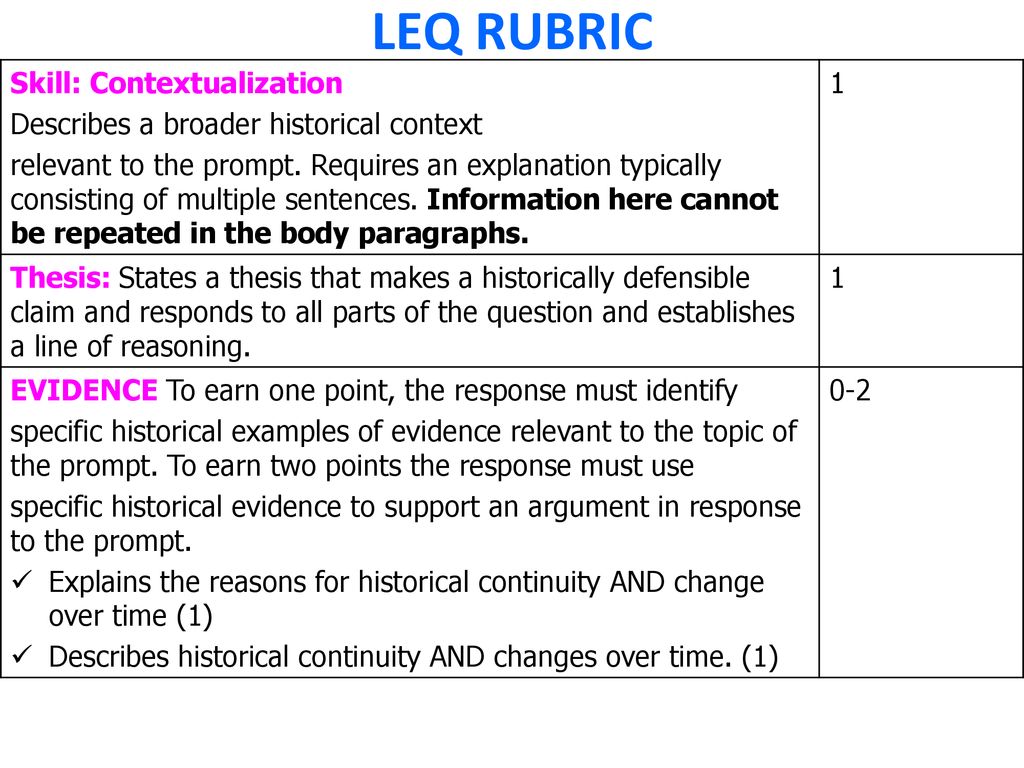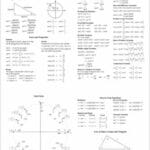Master the AP History LEQ and unlock the secrets to scoring top marks on your AP History exams (World, US, European). This comprehensive guide decodes the rubric, providing expert strategies for crafting high-scoring essays, from thesis construction to complex analysis. Let’s turn that LEQ climb into a smooth hike!
Unlocking the LEQ: Your Guide to AP History Success
So, you’re tackling AP History. The LEQ (Long Essay Question) probably looms large. Don’t worry! This guide is your secret weapon. Think of the LEQ as your chance to shine, showcasing your historical thinking skills. The rubric? It’s your cheat code to a higher score—a behind-the-scenes look at what graders reward.
Conquering the LEQ Rubric: Your 6-Point Checklist
The LEQ rubric is your recipe for a killer essay. Six key ingredients, and nailing each one unlocks those points.
Thesis/Claim (1 point): Your essay’s north star. Directly answer the prompt with a crystal-clear argument. It’s the concise summary of your entire essay, typically found in your introduction or conclusion.
Contextualization (1 point): Zoom out! How does your topic fit into the bigger historical picture? What else was happening, and how might that have influenced the events you’re discussing? This shows you understand the historical landscape.
Evidence (2 points): Back up your claims with concrete examples. You need at least three specific pieces of evidence. Don’t just name-drop; explain how they relate to your argument. Each piece is a brick in the wall of your argument.
Analysis and Reasoning (2 points): Connect the dots. Show why your evidence matters.
- Historical Reasoning Skill (1 point): Use comparison, causation, continuity and change over time (CCOT), or periodization to explain why your evidence supports your argument. Are things similar or different? What caused what? How did things change (or stay the same)?
- Complexity (1 point): Go beyond a simple, one-sided story. Acknowledge different perspectives, explore nuances, and show that history is rarely black and white. Were there unintended consequences? Other contributing factors? Exploring these complexities shows a deeper understanding.
LEQ Structure: Building a Powerful Argument
You know the basics. Now, let’s build a solid essay. We’ll explore different structures and strategies to present your points clearly and convincingly.
The Scoring Rubric: Your Blueprint for Success
The six points correspond to specific historical thinking skills: thesis (1), context (1), evidence (2), and analysis and reasoning (2). Knowing what graders look for is like having a sneak peek at the answer key.
Historical Reasoning Skills: Your Analytical Toolkit
Historians don’t just tell stories; they analyze. Use comparison, causation, and CCOT. These skills are essential for a strong LEQ. Comparison highlights similarities and differences. Causation explores why things happened. CCOT traces how things evolved (or stayed the same).
Key Elements: From Thesis to Conclusion
- Thesis Statement: The heart of your LEQ. A clear, concise roadmap of your argument, directly answering the prompt. Make it prominent.
- Historical Context: Set the scene. Show how your topic fits into the broader historical narrative. Zooming out adds depth and significance.
- Supporting Evidence: Prove your points. Use specific historical examples and explain how they support your thesis.
- Analysis and Reasoning: Show off your analytical skills. Explain how and why your evidence matters. Interpret the facts and connect them to your thesis.
A Step-by-Step Guide to LEQ Structure
- Introduction: Grab attention, provide context, state your thesis.
- Body Paragraphs: Each paragraph focuses on a specific aspect of your argument. Topic sentence, evidence, analysis.
- Conclusion: Restate your thesis, summarize main points, suggest broader implications.
Avoiding Pitfalls and Advanced Strategies
- Be Precise: Avoid vague language and generalizations. Use concrete examples and connect your evidence directly to your argument.
- Nuances of Argumentation: Explore multiple perspectives and acknowledge complexities. Consider qualifying your argument (presenting conditions where your thesis might not be entirely true).
- Tailor Your Approach: Different LEQ prompts require different approaches. Practice analyzing prompts and adjusting your strategy.
LEQ Grading: Understanding the Scoring System
Let’s demystify the scoring system. The six-point rubric isn’t a rigid set of rules, but a guide to help you write a stellar essay. Each point corresponds to a specific skill historians use.
The Six Pillars of a High-Scoring LEQ
- Thesis/Claim (1 Point): A clear, direct answer to the prompt. The foundation of your argument.
- Contextualization (1 Point): Setting the historical stage. How does your topic fit into the larger historical narrative?
- Evidence (1 Point for each piece, up to 2): Specific historical examples that support your thesis. Use them, don’t just mention them.
- Analysis and Reasoning (2 Points):
- 1 point for using historical thinking skills (comparison, causation, CCOT) to explain how your evidence supports your thesis.
- 1 point for complexity: demonstrating nuance, acknowledging counterarguments, or making insightful connections.
- Sophistication (1 Point): The icing on the cake. A nuanced and insightful understanding of history, reflected in a complex and persuasive argument. This might involve synthesizing information, acknowledging multiple perspectives, or exploring long-term impacts.
Your teacher might convert this 6-point scale into a letter grade. This conversion varies, so ask your teacher for specifics.
Additional Insights and Resources
- Skill Transferability: Mastering the LEQ rubric benefits you beyond the AP exam, honing analytical and writing skills for college and beyond.
- Common Mistakes: Weak theses, insufficient contextualization, lack of complex analysis. Practice and feedback can address these.
- Rubric Evolution: Stay updated on any changes to the rubric on the College Board website (apcentral.collegeboard.org).
- Time Management: Practice pacing yourself to allow sufficient time for planning, writing, and reviewing.
- Further Resources: Explore losertown calc or losertown calculator (if relevant to a historical context involving population or resource management), or piu mosso music definition (if relevant to a historical period’s musical style). Consider websites like Albert.io and Fiveable for additional LEQ support.
By understanding the rubric, mastering historical thinking skills, and practicing regularly, you can conquer the LEQ and showcase your historical thinking prowess. Remember, historical interpretations can evolve, so embrace nuance, acknowledge uncertainties, and present a well-reasoned, evidence-based argument. This approach fosters valuable critical thinking skills for lifelong learning.
- Understand bone yellow: Colorism’s impact on Black communities - April 19, 2025
- Green Natural Sandstone: Eco-Friendly Building Solutions - April 19, 2025
- Red Cross Flag: Protecting Humanity Through History - April 19, 2025
















